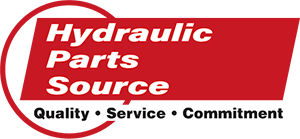3 Common Causes of Noisy Pumps and What to Check
Hearing a lot of noise from any part of your machinery is less than ideal. However, with hydraulic pumps, this is a loud and clear sign that something is off.
Hydraulic pumps are full of fluids that course through the system at high speeds and pressures. That is enough to generate a lot of noise, but hydraulic pumps design usually muffles such sounds.Still, over time, machinery wears down and loses efficiency. When you hear loud noises coming from the pump, you can be sure that your hydraulic pump requires attention.
Three common causes that make pumps noisy are cavitation, air issues, and turbulence.
Cavitation and Air Issues
The leading cause is cavitation, low pressure bubbles formed from condensed gasses in the liquid flowing through the system. These gases are in the form or vapor bubbles which implode or return to a liquid when the external pressure rises somewhere within the pump. This return to a liquid — or implosion —i s what creates the noise.
Reading gages and making changes so that the pump operates in the middle of its performance curve often fixes the problem.
Cavitation is often confused with air moving through the pump. The noise caused by air is different from that of cavitation. Air in the system creates a low-pitched “rumbling” noise where cavitation has a higher “metalized” rattle. Both produce vibration.Air often creates more vibration. A number of things can cause air to enter the system, including an air leak in the suction line. This could be in the form of a loose connection, a cracked line or an improper fitting seal. One method of finding the leak is to squirt oil around the suction line fittings.
The fluid will be drawn into the suction line, and the knocking sound inside the pump will stop for a short while once the airflow path is found.
Turbulence
Turbulence is sometimes mistaken for air. While the pump may not be suffering from the effects of air, it could still be affected by turbulence in the well or source from which the pump is drawing.Suction lines too close to one another can interact when operated at the same time. Always ensure that multiple suction lines are properly spaced from one another and from the well’s sides and bottom. Long horizontal suction lines will contribute to pump noise as well as increased vibration.
Other features in the well — such as mixers — also can cause turbulence.
Other methods to reduce pump noise and wear include:- Use short connectors without sharp bends
- Employ proper sizing and replace large pumps with several smaller ones
- Increase Net Positive Suction Head Available (NPSHA) above Net Suction Positive Head Required (NPSHR) to avoid cavitation
- Mount the power unit on a rebound surface to reduce vibration and noise
- Connect metal tubes using small hoses to avoid radiating noise
- Properly install and maintain the suction strainer at the inlet of the pump to reduce more than 50% of the pump repair and replacement
- Remove entrapped air to avoid noise due to cavitation and aeration
- Reduce pressure pulsation and flow ripples

